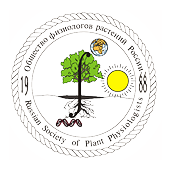Новости науки и практики // Январь 2022

Integration of nutrient and water availabilities via auxin into the root developmental program
In this review, Liu and von Wirén highlight current knowledge on nutrient- and water-related developmental processes that impact root foraging and involve auxin as a central player. A deeper understanding and exploitation of these auxin-related processes and mechanisms promises advances in crop breeding for higher resource efficiency.
Nectaries in ferns: their taxonomic distribution, structure, function, and sugar composition
Extrafloral nectaries have mainly been studied in angiosperms, but have also been reported in 39 fern species. Mehltreter et al. provide a global review of nectaries in ferns and examined their structure, function, and nectar sugar composition in two genera.
Plant TOR signaling network: Complexes, conservations and specificities
Target of Rapamycin (TOR) is an evolutionarily conserved protein kinase that functions as a central signaling hub to integrate diverse internal and external cues to precisely orchestrate cellular and organismal physiology. Liu and Xiong review recent discoveries on the plant TOR signaling network. They present an overview of plant TOR complexes, analyze the signaling landscape of the plant TOR signaling network from the upstream signals that regulate plant TOR activation to the downstream effectors involved in various biological processes, and compare their conservation and specificities within different biological contexts. Finally, they summarize the impact of dysregulation of TOR signaling on every stage of plant growth and development, from embryogenesis and seedling growth, to flowering and senescence.
Nuclear genome of a pedinophyte pinpoints genomic innovation and streamlining in the green algae
The genomic diversity underpinning high ecological and species diversity in the green algae (Chlorophyta) remains little known. Repetti et al. aimed to track genome evolution in the Chlorophyta, focusing on loss and gain of homologous genes, and lineage-specific innovations of the core Chlorophyta.
Plant cell polarity as the nexus of tissue mechanics and morphogenesis
Gorelova et al. review the role of cell polarity at the interface of tissue mechanics and morphogenesis. They also aim to integrate biochemistry-centred insights with concepts derived from physics and physical chemistry. Lastly, they propose a set of questions that will help address the fundamental nature of cell polarization and its mechanistic basis.
Corybas papillatus (Orchidaceae), a new orchid species from peninsular Thailand
A new species, Corybas papillatus, is described and illustrated from peninsular Thailand. The new species is easily recognized through a combination of the following characters: the purplish flower, the rounded apex of the dorsal sepal, the outer surface of dorsal sepal covered with irregular papillae in the upper half, the lateral sepals adnate laterally at the base to the connate petals, the V-shaped throat, the labellum bearing short hairs, dentate to erose labellum margins, and well-developed conical spurs. A key to the species of Corybas in Thailand is presented.
Stomatal closure during water deficit is controlled by belowground hydraulics
Adballa et al. used a novel root pressure chamber to measure, during soil drying, the relation between transpiration rate (E) and leaf xylem water pressure (ψleaf-x) in tomato shoots grafted onto two contrasting rootstocks, a long and a short one. In parallel, they also measured the E(ψleaf-x) relation without pressurization. A soil-plant hydraulic model was used to reproduce the measurements. They hypothesize that: 1) stomata close when the E(ψleaf-x) relation becomes nonlinear; and 2) nonlinearity occurs at higher soil water contents and lower transpiration rates in short-rooted plants.
https://academic.oup.com/aob/advance-article/doi/10.1093/aob/mcab141/6454249?login=true
Rapid evolution of post-zygotic reproductive isolation is widespread in Arctic plant lineages
Gustafsson et al. show that post-zygotic reproductive isolation has developed multiple times within taxonomically recognized Arctic species belonging to several distantly related lineages, and that reproductive isolation may have developed over just a few millennia. Rapid and widespread evolution of incipient biological species in the Arctic flora might be associated with frequent bottlenecks due to glacial cycles, and/or selfing mating systems, which are common in the harsh Arctic environment where pollinators are scarce.
Genetic determinants of endophytism in the Arabidopsis root mycobiome
Mesny et al. sequence the genomes of 41 fungal isolates representative of the A. thaliana root mycobiota for comparative analysis with other 79 plant-associated fungi. Their analyses indicate that root mycobiota members evolved from ancestors with diverse lifestyles and retain large repertoires of plant cell wall-degrading enzymes (PCWDEs) and effector-like small secreted proteins. They identify a set of 84 gene families associated with endophytism, including genes encoding PCWDEs acting on xylan (family GH10) and cellulose (family AA9).
A phosphorus‐limitation induced, functionally conserved DUF506 protein is a repressor of root hair elongation in plants
Ying et al. demonstrate that a DOMAIN OF UNKNOWN FUNCTION 506 (DUF506) protein, AT3G25240, negatively regulates Arabidopsis thaliana RH growth. The AT3G25240 gene is strongly and specifically induced during phosphorus (P)-limitation. Mutants of this gene, which we call REPRESSOR OF EXCESSIVE ROOT HAIR ELONGATION 1 (RXR1), have much longer RHs, higher phosphate content and seedling biomass, while overexpression of the gene exhibits opposite phenotypes.
The main oxidative inactivation pathway of the plant hormone auxin
Hayashi et al. show that the predominant natural auxin, indole-3-acetic acid (IAA), is mainly inactivated via the GH3-ILR1-DAO pathway. IAA is first converted to IAA-amino acid conjugates by GH3 IAA-amidosynthetases. The IAA-amino acid conjugates IAA-aspartate (IAA-Asp) and IAA-glutamate (IAA-Glu) are storage forms of IAA and can be converted back to IAA by ILR1/ILL amidohydrolases. They further show that DAO1 dioxygenase irreversibly oxidizes IAA-Asp and IAA-Glu into 2-oxindole-3-acetic acid-aspartate (oxIAA-Asp) and oxIAA-Glu, which are subsequently hydrolyzed by ILR1 to release inactive oxIAA.
Mutation bias reflects natural selection in Arabidopsis thaliana
Since the first half of the twentieth century, evolutionary theory has been dominated by the idea that mutations occur randomly with respect to their consequences. Monroe et al. test this assumption with large surveys of de novo mutations in the plant Arabidopsis thaliana. In contrast to expectations, they find that mutations occur less often in functionally constrained regions of the genome—mutation frequency is reduced by half inside gene bodies and by two-thirds in essential genes.
Toward synthetic plant development
Brophy highlights the central role of auxin in plant development and the synthetic biology approaches that could be used to turn auxin-response regulators into powerful tools for modifying plant form. She hypothesizes that recoded, gain-of-function auxin response proteins combined with synthetic regulation could be used to override endogenous auxin signaling and control plant structure.
Новости
Новости науки и практики // Июль 2024
Обзор научных новостей, опубликованных во всемирной паутине за последний месяцНовости науки и практики // Июнь 2024
Обзор научных новостей, опубликованных во всемирной паутине за последний месяцНовости науки и практики // Май 2024
Обзор научных новостей, опубликованных во всемирной паутине за последний месяц


Объявления
Записей не найдено.



